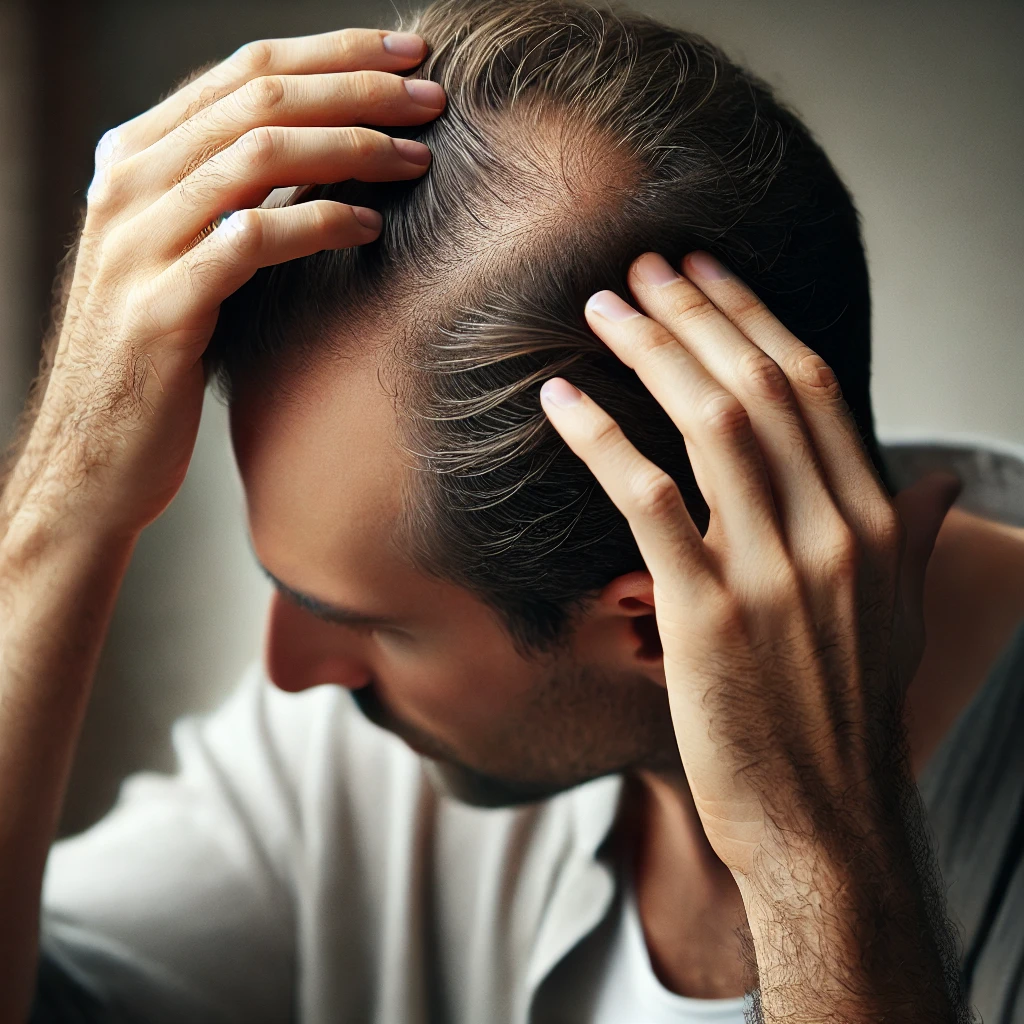Why Is Your Hair Thinning? Top Root Causes and What You Can Do About It

Are you noticing more hair in your brush, on your pillow, or in the shower drain? You’re not alone. Hair thinning is one of the most common concerns for both men and women—and it often happens gradually until one day, it’s hard to ignore.
But here’s the good news: hair thinning is usually a symptom, not a permanent sentence. Once you identify the root cause, there are real, effective ways to slow, stop, and even reverse the process.
So why is your hair thinning? Let’s explore the top causes of hair loss and what you can do to restore thicker, healthier hair—naturally.
🔍 1. Hormonal Imbalances
Hormones play a major role in hair growth—and imbalances are a top cause of thinning.
In women:
- Estrogen and progesterone decline (perimenopause, menopause, postpartum)
- Testosterone sensitivity or DHT conversion (especially around the temples or crown)
- PCOS (Polycystic Ovary Syndrome) leads to excess androgens and scalp hair loss
In men:
- DHT (dihydrotestosterone) sensitivity is the main culprit in male pattern baldness
Signs it’s hormonal:
- Thinning along the hairline, crown, or temples
- Widening part or diffuse shedding
- Hair loss tied to menstrual changes, pregnancy, or stress
- Oily scalp or breakouts
Solution: Functional hormone testing (saliva, blood, or DUTCH test) and targeted therapies like DIM, saw palmetto, or bioidentical support can help restore balance.
🍽️ 2. Nutrient Deficiencies
Hair is a non-essential tissue—so when your body is depleted, it prioritizes survival over beauty. Even a mild deficiency can disrupt the hair growth cycle.
Most common deficiencies linked to thinning hair:
- Iron (especially ferritin)
- Vitamin D
- Zinc
- Biotin and B-complex vitamins
- Protein (low intake or poor digestion)
Solution: Get lab work to check your levels. Replenish with nutrient-dense foods, targeted supplements, and improve digestion to support healthy follicle growth from the inside out.
😰 3. Stress and Cortisol Overload
Stress doesn't just affect your mood—it wreaks havoc on your hair. Emotional, physical, or inflammatory stress can trigger a condition called telogen effluvium, where large numbers of hairs shift into the shedding phase.
Triggers include:
- Trauma, surgery, or illness
- Divorce or emotional distress
- Over-exercising or under-eating
- Long COVID or post-viral inflammation
You may notice hair loss 3–4 months after a stressful event, with a handful of hair shedding daily.
Solution: Support your adrenal system with adaptogens (ashwagandha, rhodiola), prioritize sleep, and consider therapies like red light therapy or PRF to stimulate regrowth.
🧬 4. Genetics and Age-Related Thinning
If hair thinning runs in your family, you may be genetically predisposed to androgenic alopecia. But that doesn’t mean there’s nothing you can do.
Genetic hair loss is influenced by DHT sensitivity, circulation, and scalp inflammation—all of which can be modulated with the right support.
As you age, hair follicles naturally shrink and produce finer, shorter strands. Hormones, oxidative stress, and slower cell turnover also play a role.
Solution:
- Scalp PRF or Alma TED with growth factors
- Topical peptides or minoxidil alternatives
- Red light therapy to re-energize follicles
- Saw palmetto, pumpkin seed oil, or rosemary extract to block DHT
Consistency is key—hair regrowth takes time, but improvement is possible with the right plan.
🦠 5. Scalp Health and Inflammation
An unhealthy scalp = unhealthy hair. Conditions like seborrheic dermatitis, fungal overgrowth, or chronic inflammation can block follicles and disrupt growth cycles.
You might notice:
- Itching, flaking, or redness
- Oily buildup or dry patches
- Thinning in patches or diffuse shedding
- Slow regrowth after shedding
Solution:
- Use gentle, pH-balanced shampoo
- Try natural scalp treatments like tea tree oil, aloe, or apple cider vinegar
- Consider scalp detox or red light therapy to reduce inflammation
- Work with a provider to address underlying infections or microbiome imbalances
⚠️ Bonus: Medications and Medical Conditions
Certain medications can trigger hair loss, including:
- Birth control pills
- Thyroid medications
- Antidepressants
- Blood pressure meds
- Chemotherapy
Chronic illnesses like thyroid dysfunction, autoimmune diseases, and anemia also play a role.
Solution: If you suspect a medication is causing hair loss, talk to your provider. You may be able to switch or support your system with targeted nutrients and regenerative therapies.
✨ How to Regrow and Restore Thinning Hair
The best approach to thinning hair is root-cause repair plus regenerative stimulation.
At Sheen Vein & Cosmetics, we often recommend:
- PRF scalp injections to deliver your body’s own growth factors directly to follicles
- Alma TED with peptides or PRF to increase circulation and collagen
- Red light therapy to activate dormant follicles and reduce inflammation
- Functional lab testing to assess hormones, nutrients, thyroid, and inflammation
- Topical hair serums and supplements to support regrowth from every angle
Final Thoughts: Hair Thinning Is a Symptom—Not the End
If your hair is thinning, it’s your body’s way of asking for help. The good news? Hair loss is often reversible when you identify and treat the underlying cause.
With the right testing, support, and regenerative therapies, you can restore your hair’s strength, thickness, and vitality—naturally and safely.
Concerned About Hair Thinning?
At Sheen Vein & Cosmetics, we offer advanced, personalized solutions for hair restoration using PRF, red light therapy, microneedling, and functional medicine.
✨ Book your consultation today and start your journey toward stronger, healthier hair.